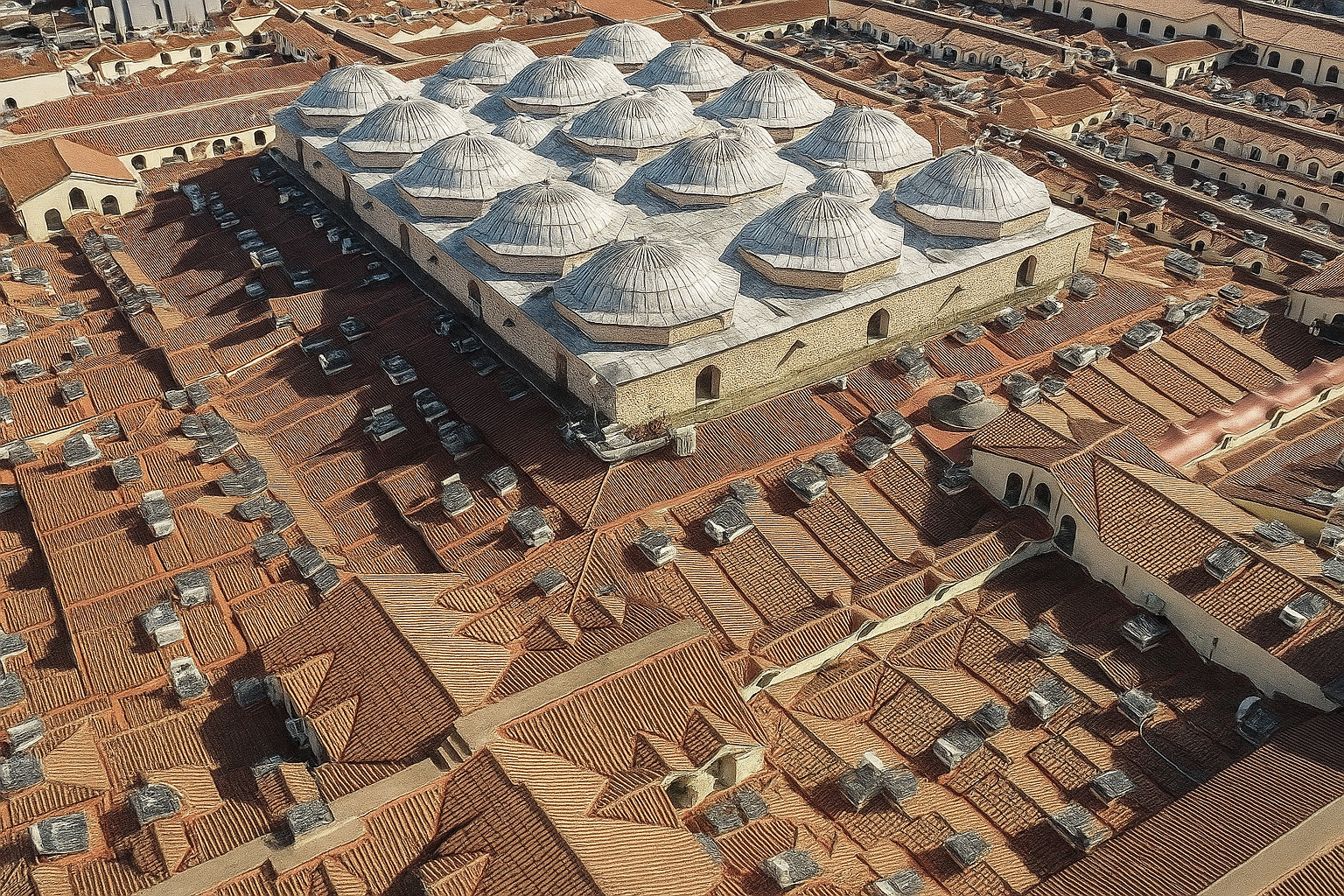
Kapalıçarşı (Grand Bazaar)
HISTORICAL BACKGROUND AND SIGNIFICANCE
Kapalıçarşı, or the Grand Bazaar, is one of the oldest and largest covered markets in the world, located in the heart of Istanbul. Its origins date back to the mid-15th century, shortly after the Ottoman conquest of Constantinople in 1453. The bazaar was initially constructed to stimulate the economy and provide a space for merchants to trade goods. The first section of the bazaar was built under the orders of Sultan Mehmed II, and it expanded significantly over the centuries, particularly during the reign of Sultan Suleiman the Magnificent in the 16th century.
The Grand Bazaar has served not only as a commercial hub but also as a cultural melting pot, reflecting the diverse influences that have shaped Istanbul over the centuries. It has witnessed the rise and fall of empires, the ebb and flow of trade routes, and the vibrant interactions of various cultures. Today, it remains a symbol of Istanbul's rich history and a testament to the city's enduring spirit of commerce and community.
ARCHITECTURAL FEATURES AND DESIGN ELEMENTS
The architectural design of Kapalıçarşı is a fascinating blend of Byzantine and Ottoman styles, characterized by its vaulted ceilings, intricate tile work, and ornate arches. The bazaar spans over 30,000 square meters and consists of more than 4,000 shops, making it a labyrinth of narrow streets and alleyways. The main entrance is adorned with a grand archway, while the interior features a series of interconnected domes that create a unique atmosphere.
The bazaar is divided into various sections, each dedicated to specific types of goods such as textiles, jewelry, spices, and ceramics. The vibrant colors and intricate patterns of the merchandise are complemented by the lively atmosphere created by the bargaining and chatter of shoppers and merchants. The design not only facilitates commerce but also encourages social interaction, making it a lively gathering place for locals and tourists alike.
CULTURAL AND RELIGIOUS IMPORTANCE
Kapalıçarşı is not just a marketplace; it is a cultural institution that embodies the spirit of Istanbul. It has played a significant role in the social and economic life of the city for centuries. The bazaar has been a place where people from different backgrounds come together, fostering a sense of community and shared identity.
Religiously, the bazaar is located near several important mosques, including the Nuruosmaniye Mosque, which adds to its significance. The bazaar has often been a site for various cultural events and festivals, reflecting the rich traditions of Turkish culture. The art of bargaining is deeply rooted in the bazaar's culture, where haggling is not only expected but celebrated as part of the shopping experience.
VISITOR EXPERIENCE AND WHAT TO EXPECT
Visiting Kapalıçarşı is an immersive experience that engages all the senses. As you enter the bazaar, you are greeted by a kaleidoscope of colors, from the vibrant textiles to the shimmering gold and silver jewelry. The air is filled with the enticing aromas of spices, sweets, and traditional Turkish delights.
Expect to spend several hours exploring the maze-like alleys, where you can find everything from handcrafted carpets to exquisite ceramics. The atmosphere is lively, with shopkeepers often calling out to entice you into their stores. Bargaining is an integral part of the experience, so don’t hesitate to negotiate prices. It’s not just about shopping; it’s about the interaction and the stories exchanged between buyers and sellers.
INTERESTING FACTS AND ANECDOTES
1. Kapalıçarşı is home to approximately 25,000 people who work in the bazaar, including shopkeepers, artisans, and craftsmen. 2. The bazaar has survived numerous fires and earthquakes throughout its history, with significant restorations occurring in the 18th and 19th centuries. 3. It is estimated that around 400,000 to 500,000 visitors pass through the Grand Bazaar daily, making it one of the most visited tourist attractions in the world. 4. The bazaar has been featured in various films and literature, highlighting its cultural significance and allure. 5. There is a saying among locals that if you get lost in the bazaar, you will always find your way back, reflecting the bazaar's enchanting and welcoming nature.
PRACTICAL VISITING INFORMATION
- **Hours**: The Grand Bazaar is open from 9:00 AM to 7:00 PM, Monday through Saturday. It is closed on Sundays and public holidays. - **Best Times to Visit**: To avoid the crowds, it is advisable to visit early in the morning or late in the afternoon. Weekdays tend to be less busy than weekends. - **Tips**: Wear comfortable shoes, as you will be walking a lot. Bring cash, as not all vendors accept credit cards. Don’t be afraid to haggle; it’s part of the experience! Take your time to explore and enjoy the atmosphere, and consider visiting nearby attractions, such as the Spice Bazaar and the Suleymaniye Mosque, to enhance your experience.
In conclusion, Kapalıçarşı is more than just a shopping destination; it is a vibrant tapestry of history, culture, and community. A visit to this iconic bazaar offers a unique glimpse into the heart of Istanbul, making it an essential stop for anyone exploring this magnificent city.